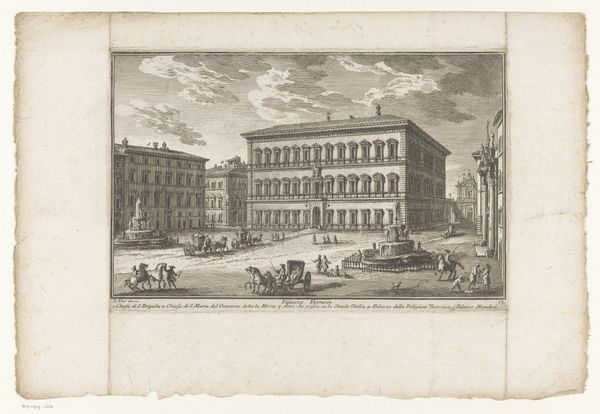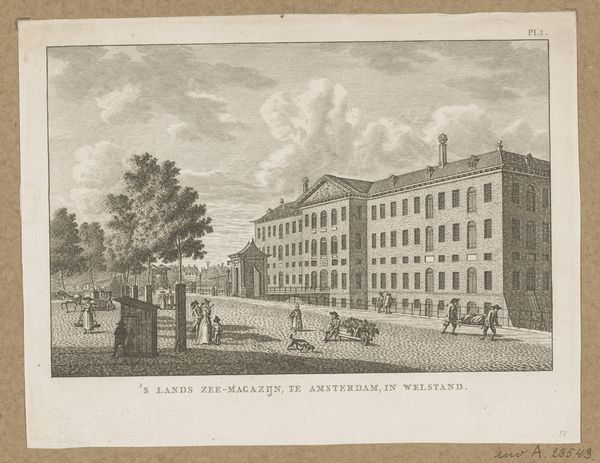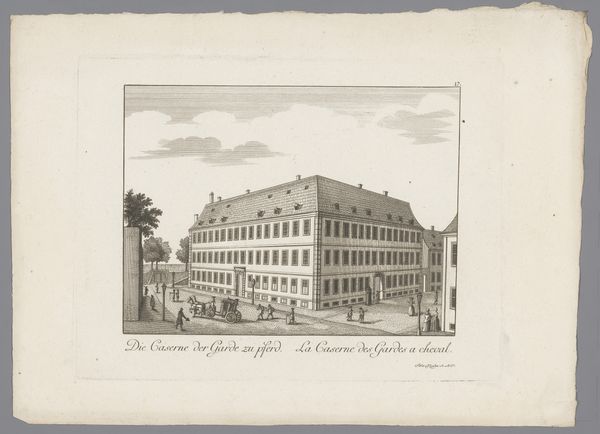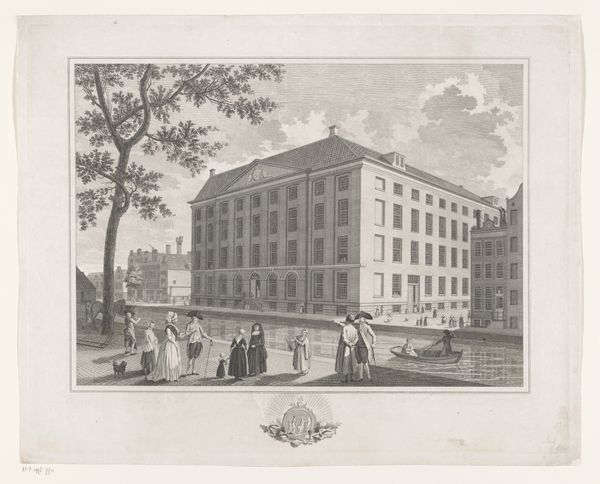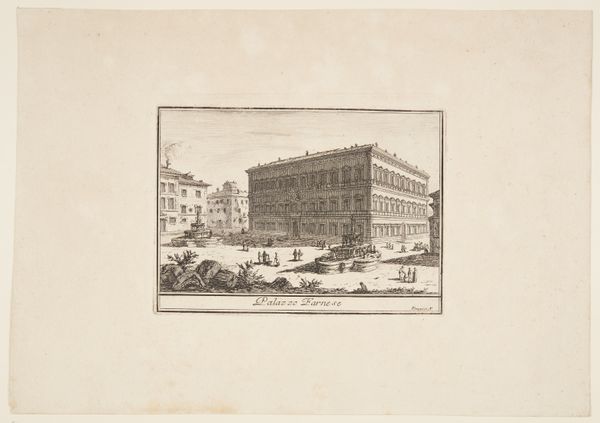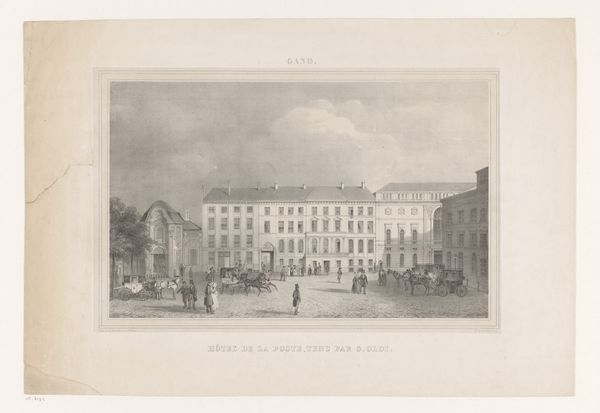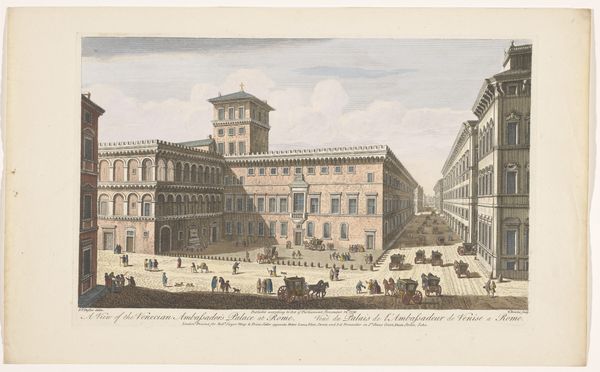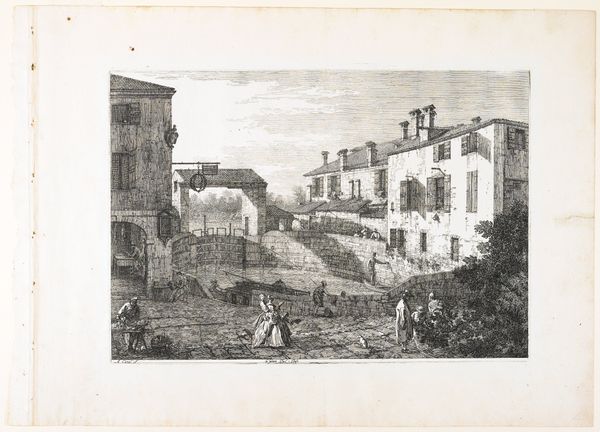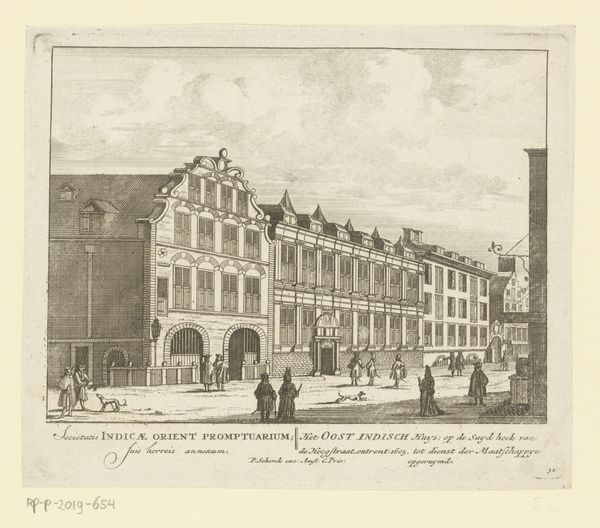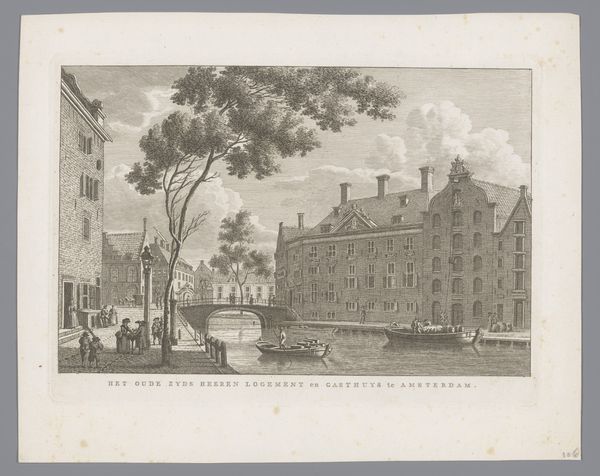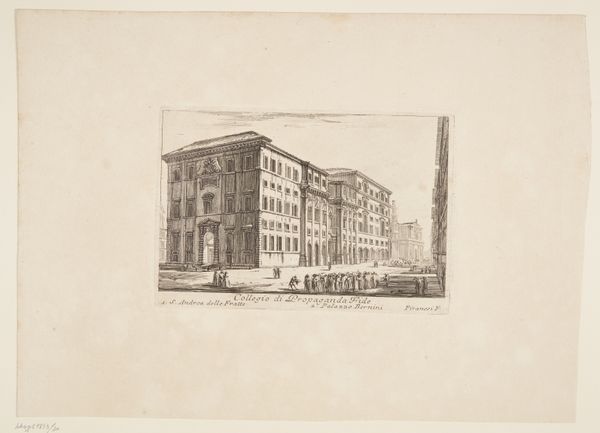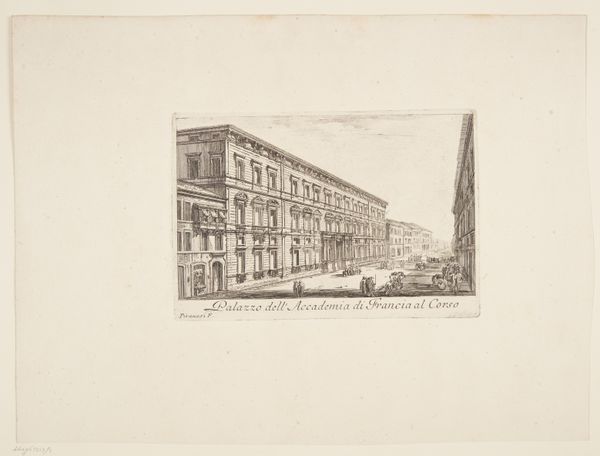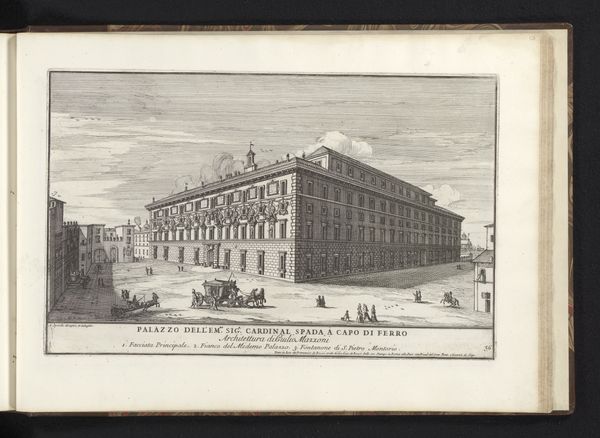
print, etching, architecture
#
neoclacissism
# print
#
etching
#
landscape
#
form
#
line
#
cityscape
#
academic-art
#
architecture
#
realism
Dimensions: height 411 mm, width 642 mm
Copyright: Rijks Museum: Open Domain
Curator: This etching by Louis Pierre Baltard, dating back to 1816, captures an exterior view of the Roman Theater of Orange. Editor: The monumentality is striking. The sheer volume of stone… it feels oppressive almost, doesn't it? And yet, meticulously rendered, right? Curator: Indeed. Baltard’s work demonstrates Neoclassical leanings with its almost photographic detail combined with idealized form, but focusing on the process, etching allowed for reproducibility. Prints like these circulated widely, influencing architectural trends and aesthetic preferences. The labor involved in creating the printing plates would have been significant. Editor: Absolutely, and that accessibility is key to understanding its impact. But it’s not just about aesthetics, it's also about power. Ancient Roman architecture was being used to visually connect contemporary regimes with the perceived glory of that ancient civilisation. You see the Roman revival throughout European cities at the time, expressing political ideas through civic structures. Curator: Certainly, the availability and affordability of prints allowed a far broader public than previously, to participate in civic understanding and discourse through architectural form. Editor: Also notice how he situates the architecture amidst a contemporary cityscape. Small, human scale buildings contrast with the vastness of the theater, highlighting a conscious layering of historical periods. Curator: Yes, which makes it not merely a document, but a carefully constructed artifact intended to both inform and evoke certain ideals. Editor: A potent piece then, about materials, access, history, and how those factors contribute to civic narratives. Curator: A blend of technical skill and ideology, indeed. And the distribution networks facilitated the widespread influence of these ideas, reflecting socio-political currents far beyond a mere artistic style.
Comments
No comments
Be the first to comment and join the conversation on the ultimate creative platform.
